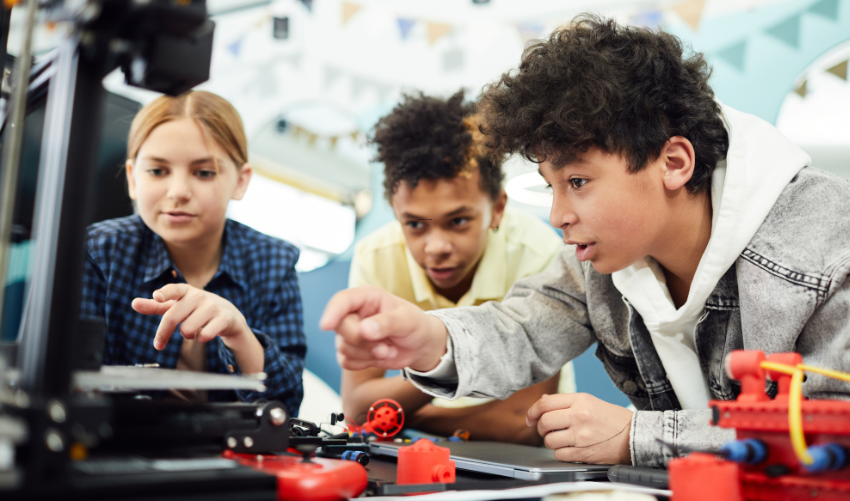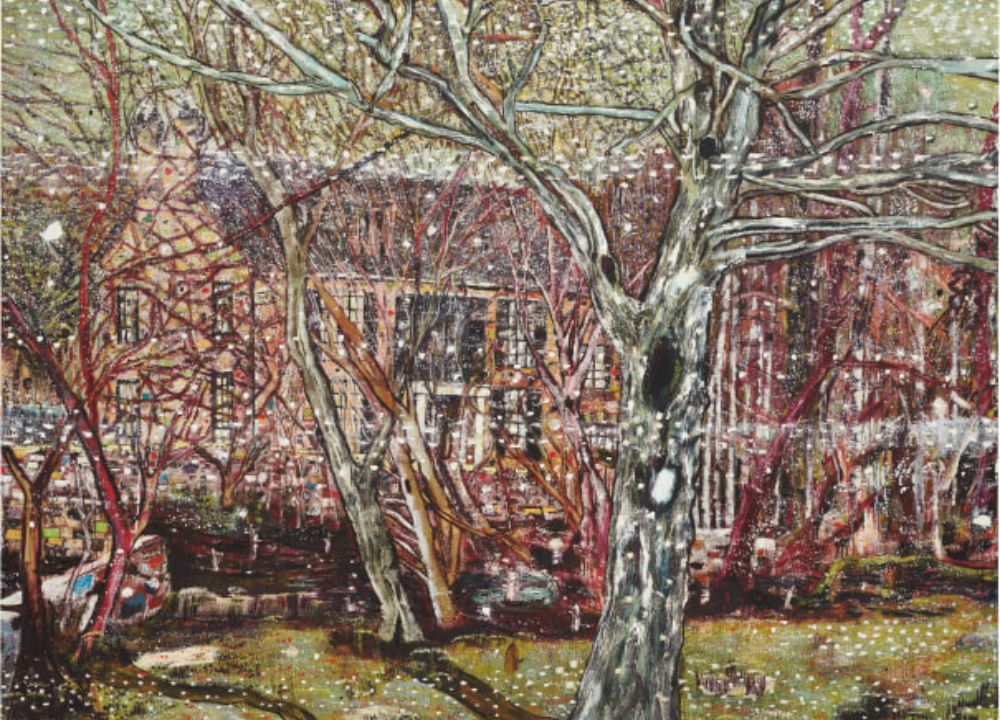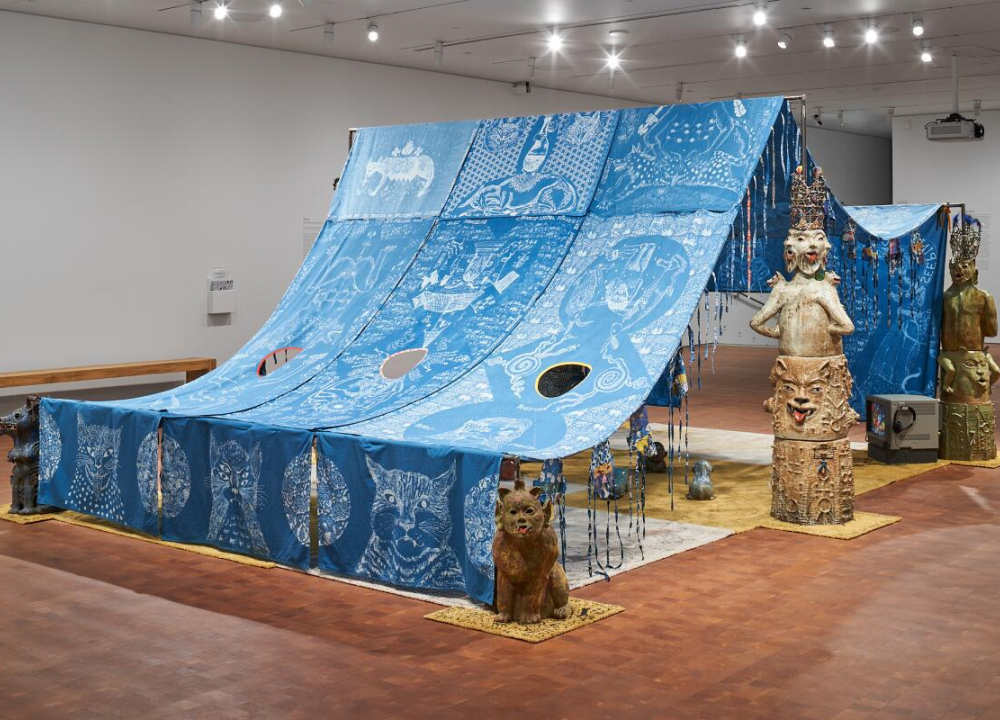Kids love to express themselves, and art is a fantastic outlet for their imagination. However, many children quickly tire of traditional coloring activities. The good news is that there are countless unique art projects waiting to be discovered. Imagine your child creating stunning art pieces using everyday materials or exploring new techniques that ignite their passion.
These projects can boost their confidence and enhance their fine motor skills while keeping them entertained. You’ll find a variety of fun and innovative art projects that will spark your child’s creativity and provide hours of enjoyment.
Creative Craft Ideas
Kids love to create. Unique art projects can inspire their imagination and creativity. Beyond coloring books, there are many fun ways to make art. Creative craft ideas encourage kids to explore different materials and techniques. These activities are perfect for rainy days or family bonding time.
Recycled Materials Art
Recycling is not just good for the planet; it can also spark creativity in kids. Using everyday items can turn trash into treasures. Here are some great ideas:
- Bottle Cap Magnets: Collect bottle caps. Paint them and add magnets on the back.
- Toilet Paper Roll Animals: Cut and decorate rolls to create fun animal figures.
- Cardboard Box Houses: Use large boxes to build mini houses. Let kids design their own.
These projects promote creativity and teach children about recycling. Here’s a simple table of materials you can use:
| Material | Possible Projects |
|---|---|
| Bottle Caps | Magnets, Jewelry |
| Cardboard | Mini Houses, Masks |
| Plastic Bottles | Planters, Bird Feeders |
Recycled materials are accessible and free. Kids learn to create while being eco-friendly.
Nature-inspired Projects
Nature offers endless inspiration for art. Kids can use items from their surroundings to create beautiful pieces. Here are some fun ideas:
- Leaf Prints: Use leaves and paint to make prints on paper.
- Rock Painting: Collect smooth rocks. Paint them with fun designs or messages.
- Flower Collage: Gather flowers and leaves. Glue them onto paper for a colorful collage.
Nature-inspired projects connect kids with the environment. They learn about colors, shapes, and textures. Try these tips to encourage creativity:
- Go on a nature walk to collect materials.
- Discuss colors and shapes found in nature.
- Encourage free expression in their art.
Using nature as inspiration helps kids appreciate the world around them.
Diy Tie-dye Techniques
Tie-dye is a fun and colorful craft that kids can enjoy. This technique allows them to create vibrant designs on fabric. Here’s how to get started:
- Materials Needed:
- White cotton T-shirts or pillowcases
- Fabric dye or food coloring
- Rubber bands
- Plastic gloves
- Plastic squeeze bottles (optional)
Follow these simple steps for tie-dye:
- Wet the fabric slightly and twist it.
- Secure it with rubber bands.
- Apply dye in sections or patterns.
- Let it sit for several hours to absorb the colors.
- Rinse with cold water and let it dry.
Encourage kids to experiment with different patterns, like spirals or stripes. Tie-dye is a fun way to express personal style.

Mixed Media Exploration
Mixed media exploration is a fun way to engage young artists. It encourages them to use different materials together. This approach builds their skills and imagination. Kids learn to express themselves using various art forms. Let’s dive into some exciting mixed media projects.
Combining Paint And Collage
Combining paint and collage allows children to explore textures and layers. This project is simple and fun. Here’s how to get started:
- Gather materials: paper, magazines, scissors, and glue.
- Select a base: Use thick paper or cardboard.
- Cut images: Kids can cut out pictures from magazines.
- Arrange the images: Lay them on the base before gluing.
- Apply paint: Use brushes or fingers to paint around the collage.
This method creates a vibrant artwork. Kids can use:
- Bright colors for a lively piece.
- Different textures for depth.
- Shapes and patterns to make it unique.
Here’s a simple table to remember materials:
| Material | Purpose |
|---|---|
| Paper | Base for the collage |
| Magazines | Images for cutting |
| Glue | To stick images |
| Paint | Add color and depth |
Children will enjoy blending these elements. The final artwork is a reflection of their creativity.
Textured Art With Fabric
Textured art with fabric encourages kids to explore different materials. Fabric adds a tactile element to their artwork. Here’s how to create textured art:
- Collect fabric scraps: Use old clothes or leftover fabric.
- Choose a canvas: A sturdy board or thick paper works well.
- Cut fabric pieces: Kids can cut different shapes.
- Arrange pieces: Lay out the fabric on the canvas.
- Glue the fabric: Secure each piece with glue.
- Add details: Use markers or paint for extra designs.
Using various fabrics can enhance their art. Consider these ideas:
- Use smooth fabrics for contrast.
- Incorporate rough fabrics for texture.
- Mix colors for a vibrant look.
Here’s a quick table of fabric types:
| Fabric Type | Texture |
|---|---|
| Cotton | Soft |
| Denim | Rough |
| Silk | Smooth |
| Felt | Thick |
This project helps kids learn about layering and composition. They can express their ideas in a unique way.
Sculpting With Clay
Sculpting with clay is another exciting mixed media project. It allows kids to create three-dimensional art. Here’s how to start sculpting:
- Choose clay: Air-dry clay or modeling clay works well.
- Plan a design: Kids can sketch what they want to make.
- Shape the clay: Roll, pinch, and mold it into forms.
- Add details: Use tools for texture and patterns.
- Let it dry: Allow the sculpture to harden.
- Paint or decorate: Use paint or other materials after drying.
Kids can create various items with clay. Here are some ideas:
- Animals and figures.
- Bowls and pots.
- Fun shapes and designs.
Here’s a handy table of clay types:
| Clay Type | Drying Method |
|---|---|
| Air-dry clay | Dries without baking |
| Modeling clay | Stays soft |
| Polymer clay | Bakes in the oven |
This project boosts fine motor skills and creativity. Kids enjoy seeing their ideas come to life.
Outdoor Art Adventures
Outdoor art adventures offer exciting ways for children to express their creativity while enjoying nature. These activities encourage exploration, teamwork, and imaginative thinking. Let’s dive into three fun outdoor art projects that kids will love.
Sidewalk Chalk Murals
Sidewalk chalk murals are a fantastic way to brighten up your neighborhood. Children can create large-scale art right on the pavement. This activity promotes creativity and gives kids a sense of ownership over their work. Here are some tips for a successful sidewalk chalk mural:
- Choose a large, flat area for drawing.
- Plan the mural design on paper first.
- Use various colors of chalk for vibrant results.
Here’s a simple process to follow:
- Gather materials: chalk, a bucket of water, and brushes.
- Draw outlines with white chalk.
- Fill in colors with bright chalks.
- Use water to blend colors for a softer look.
Sidewalk chalk murals can last for days or wash away with rain. Kids will love seeing their art in public spaces.
Nature Mandalas
Nature mandalas are beautiful art pieces made from natural materials. Kids collect items like leaves, flowers, and stones to create circular patterns. This activity connects children to nature while enhancing their observation skills. Here’s how to create a nature mandala:
- Choose a flat surface in the yard or park.
- Gather natural materials in different colors and shapes.
- Start with a central point and arrange materials in circles.
Follow these steps for a memorable experience:
- Find a calm outdoor spot for concentration.
- Use symmetry for a balanced look.
- Encourage kids to be creative with their designs.
Nature mandalas are temporary art. They teach kids about nature and its beauty. Take photos to remember the creations!
Rock Painting Activities
Rock painting is a fun and simple way to create art outdoors. Kids can turn ordinary stones into colorful treasures. This activity boosts creativity and can be done anywhere. Here’s how to get started with rock painting:
- Collect smooth, clean rocks from your yard or park.
- Gather paint, brushes, and sealant.
- Plan designs like animals, patterns, or inspirational words.
Follow these steps for a successful rock painting session:
- Clean the rocks thoroughly with soap and water.
- Let them dry completely before painting.
- Use bright colors for eye-catching designs.
- Apply a sealant to protect the finished artwork.
Rock painting can be a community project. Kids can hide their painted rocks around the neighborhood for others to find. This spreads joy and creativity!
Art With A Purpose
Unique art projects go beyond coloring books. They can teach kids about community, charity, and sustainability. One engaging theme is “Art with a Purpose.” This approach combines creativity with meaningful projects. Kids learn valuable lessons while having fun.
Community Murals
Community murals offer kids a chance to make their mark. These large artworks beautify neighborhoods and promote unity. Kids work together, sharing their ideas and creativity. They learn teamwork and the importance of their community.
Here are some benefits of community murals:
- Encourages teamwork
- Enhances local spaces
- Builds confidence
- Fosters cultural awareness
Creating a community mural involves several steps:
- Choose a location
- Design the mural together
- Gather supplies
- Paint the mural
- Host an unveiling event
Kids feel pride seeing their work in public. This experience builds a sense of belonging. Community murals bring people together, creating lasting memories.
Charity Art Shows
Charity art shows are a wonderful way for kids to help others. Kids create art pieces to sell or display. The money raised supports a cause they care about. This teaches them the value of giving back.
Here’s how to organize a charity art show:
- Choose a charity or cause
- Set a date and location
- Invite local artists and kids to participate
- Promote the event through social media and flyers
- Plan activities during the show, like live painting or art workshops
Benefits of charity art shows include:
| Benefit | Description |
|---|---|
| Community Engagement | Brings people together for a common goal. |
| Creative Expression | Allows kids to showcase their artistic talents. |
| Fundraising | Raises money for important causes. |
Kids learn empathy and responsibility. They see how art can make a difference in the world.
Recycled Art Installations
Recycled art installations teach kids about sustainability. They use materials that would otherwise be thrown away. This project encourages creativity and environmental awareness.
Here are some ideas for recycled art installations:
- Use plastic bottles to create sculptures
- Make mosaics from broken tiles
- Build furniture from old pallets
- Create wall art from scrap paper
Steps to create a recycled art installation:
- Collect materials
- Brainstorm ideas
- Design the installation
- Assemble the pieces
- Display the finished work in a public space
Recycled art installations promote creativity and environmental care. Kids learn that art can be beautiful and sustainable.
Incorporating Technology
Incorporating technology can inspire creativity and make art more exciting. Digital tools open new ways for children to express themselves. They learn skills while having fun. These projects use modern devices and apps. Kids can explore art in engaging, interactive ways.
Digital Drawing Apps
Digital drawing apps are a fantastic way for kids to create art. These apps allow children to draw, paint, and design on tablets or smartphones. They provide a wide range of tools and features. Kids can experiment with colors and styles without the mess. Here are some popular digital drawing apps:
- Procreate Pocket
- Adobe Fresco
- Autodesk SketchBook
- ArtFlow
- Clip Studio Paint
Many of these apps are user-friendly. They encourage exploration and creativity. Children can save their work and share it easily. Here’s a simple table comparing some features:
| App Name | Platform | Key Features |
|---|---|---|
| Procreate Pocket | iOS | Brush customization, layers, and high-resolution canvases |
| Adobe Fresco | iOS, Windows | Live brushes, vector and raster graphics |
| Autodesk SketchBook | Multi-platform | Intuitive interface, various brushes, and tools |
Encouraging kids to use these apps helps them develop their artistic skills. They learn how to express their ideas digitally.
3d Printing Basics
3D printing is an exciting way for kids to create three-dimensional art. Children can design objects using computer software. Once they finish, a 3D printer brings their designs to life. This process is both fun and educational. Kids learn about technology and engineering while being creative. Here are some ways to introduce 3D printing:
- Start with simple designs like toys or keychains.
- Use free online software like Tinkercad.
- Explore 3D printing services for printing finished designs.
3D printing can enhance learning in many subjects. Kids can create models for science projects or art displays. Here are steps to start:
- Choose a design or create one.
- Convert the design into a 3D model.
- Prepare the printer and materials.
- Print the object and enjoy the results.
3D printing encourages critical thinking. It allows children to see their ideas transform into real objects.
Photography Projects
Photography projects can be a fun way for kids to explore art. Using a camera or smartphone, children can capture the world around them. Photography helps develop observation skills and creativity. Here are some project ideas:
- Photo scavenger hunt: Create a list of items to find and photograph.
- Nature photography: Encourage kids to take pictures of plants or animals.
- Storytelling through photos: Have kids create a photo story about their day.
Children can edit their photos using simple apps. Basic editing tools can improve their skills. Here are some popular photo editing apps:
- Snapseed
- Adobe Photoshop Express
- Canva
Photography can also be a way to share feelings and ideas. Kids can learn to express themselves through their images. It encourages them to look at the world differently.




